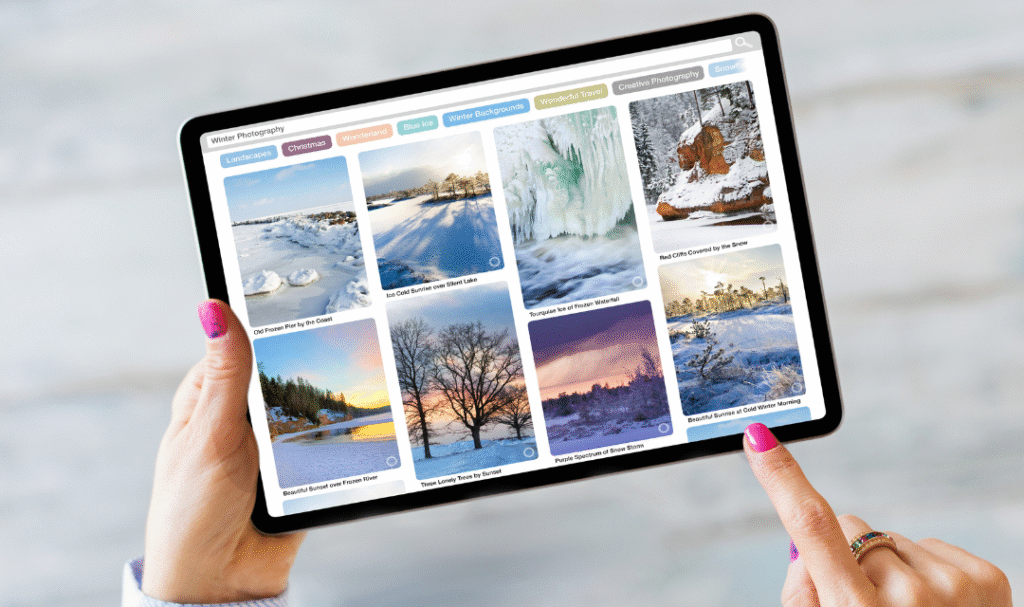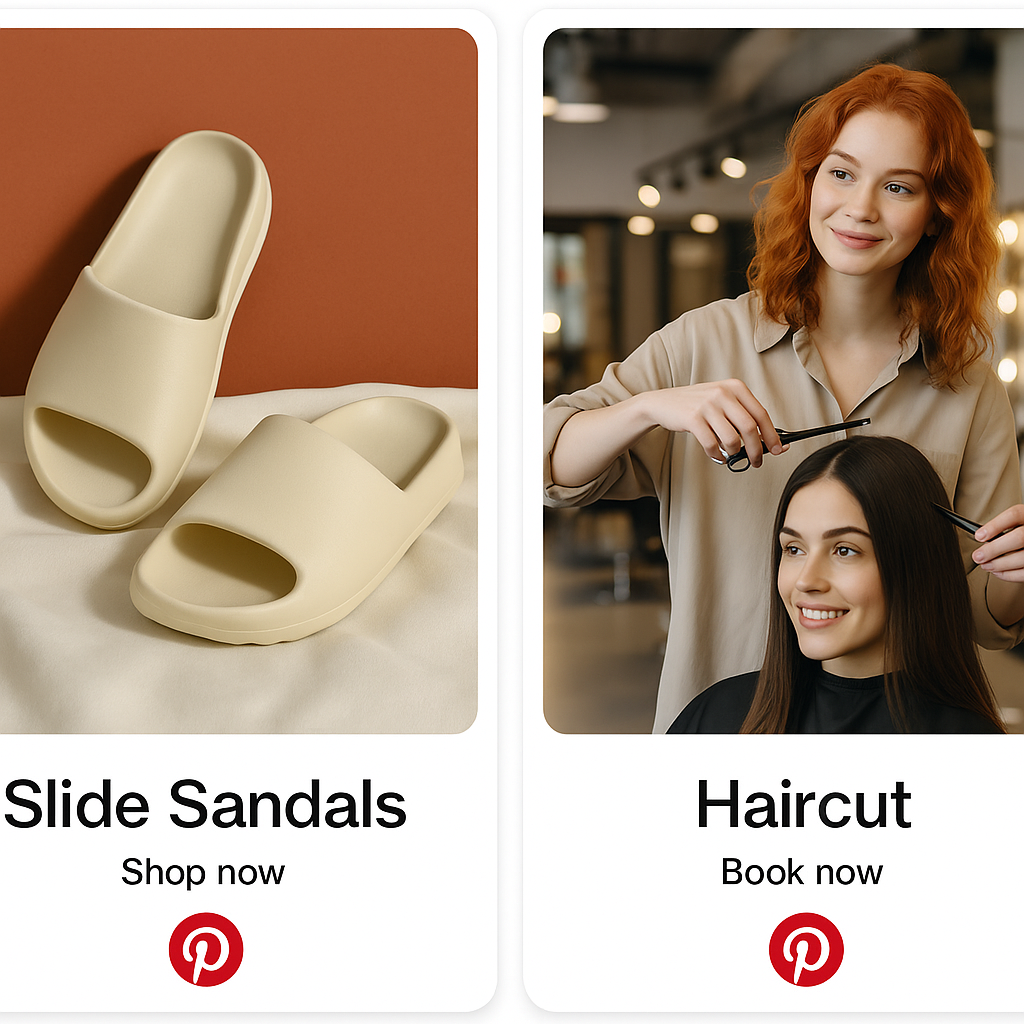
Pinterest may not make as much daily noise as TikTok or Instagram, but don’t let that fool you. In 2025, it’s one of the most underrated and powerful platforms for driving long-term, organic website traffic. While other social platforms prioritize entertainment and fleeting engagement, Pinterest quietly excels at one thing most businesses care about: intentional discovery.
Whether you’re a product-based shop, a coach, a service provider, or a blogger, your ideal audience is on Pinterest searching for solutions, ideas, and inspiration. The best part? Pinterest content has an unusually long shelf life. A well-optimized Pin can generate clicks, saves, and conversions months (or even years) after it’s published.
In this guide, we’ll walk you through a Pinterest marketing strategy for 2025 that’s built for longevity. You’ll learn how to create Pins that get noticed, optimize them for search, and track the results—without paid ads or complicated funnels. If you’re ready to turn Pins into lasting traffic, let’s get started.
Why Pinterest Still Works (and Better Than Ever in 2025)
In a world dominated by TikTok and Instagram, Pinterest often gets overlooked—but here’s the truth: Pinterest is one of the highest-converting platforms for long-term traffic, and in 2025, it’s more powerful than ever for small businesses.
What makes Pinterest different? Unlike most social media, it acts as a visual search engine, not a content feed. That means your Pins aren’t buried after 24 hours—they continue to surface in searches for months, even years. And with Pinterest’s growing ecommerce tools and AI-enhanced recommendations, users are no longer just saving ideas—they’re clicking through and buying.
Whether you’re selling products or offering services, Pinterest gives you a unique way to reach intentional, ready-to-take-action audiences. The key? Knowing how to create high-performing Pins and optimize them for visibility.
Creating Pins That Get Clicks and Saves

If your Pins aren’t converting, it’s likely because they’re not designed for the platform’s behavior in 2025. Today’s best-performing Pins are visually engaging, easy to scan, and keyword-rich.
Here’s what works:
Visual Design Tips
- Use vertical aspect ratio (2:3) for maximum visibility
- Add bold text overlays that communicate value instantly (e.g. “5 Minimalist Home Office Ideas”)
- Include your brand logo subtly for recognition
- Use fresh, branded templates with consistent fonts and color palettes
Content Types That Perform
- Step-by-step guides (perfect for service providers and coaches)
- Product spotlights with lifestyle photos
- Infographics with bite-sized takeaways
- “Idea Pins” with multiple slides to tell a story or share tips
Want to learn how to convert short-form videos into long-term traffic, too? Check out our post on YouTube Shorts Strategy: How to Turn Short Videos into Long-Term Clients.
Pinterest for Ecommerce vs. Services: What’s Different?

Pinterest is built for discovery, but how you show up depends on what you sell.
For Ecommerce:
- Use Product Pins with tags and pricing so they show up in shopping results
- Create collections or boards that match customer search intent (“Wedding Decor Ideas,” “Minimalist Desk Accessories”)
- Link each Pin directly to a product page for a seamless path to checkout
For Service Providers:
- Focus on lead magnets, blog posts, or booking pages
- Position yourself as a guide by sharing educational content (think: “5 Tips for Better Client Calls” or “What to Include in Your Brand Strategy”)
- Create boards based on your content pillars to boost relevance and authority
And unlike fast-moving platforms, your content on Pinterest builds momentum over time. That makes it especially valuable for Pinterest for small businesses with lean marketing teams.
SEO Optimization Tips for Pinterest Boards and Pins

Pinterest SEO is one of the most underrated tools in digital marketing. By adding keywords to your Pin titles, descriptions, and board names, you can rank in both Pinterest and Google searches.
Here’s what to focus on:
- Pin titles: Include exact phrases users might search for (e.g., “Easy Gluten-Free Dinner Recipes”)
- Descriptions: Add relevant keywords naturally—don’t keyword-stuff
- Board titles: Be clear and niche-specific, like “DIY Home Office Setup” instead of just “Workspace Ideas.”
- Board descriptions: Use this space to include your main keywords in a helpful, human-sounding paragraph
- Alt text for images: Improves accessibility and helps Pinterest understand your content
Use a keyword tool like Pinterest Trends to explore what your audience is searching for—and create content around those terms.
Tracking Performance & Analytics on Pinterest
Pinterest has stepped up its analytics game. Whether you’re using a personal or business account, here’s how to measure what’s working:
Key Metrics to Track:
- Outbound clicks: Your most important KPI—these drive traffic to your site
- Saves (Repins): Indicate future interest and content value
- Impressions: Good for understanding keyword reach
- Top-performing Pins and boards: Double down on what’s working
- Audience insights: See what categories your followers care about most
For more in-depth analytics and post-level insights, tools like Tailwind offer scheduling, performance breakdowns, and audience targeting to optimize your Pinterest strategy.
Want to explore more platforms? Our breakdown on TikTok Shop vs. Instagram Shopping shows how they compare for ROI and product visibility in 2025.
FAQs: Pinterest for Business in 2025
Is Pinterest still worth it in 2025?
Absolutely. Pinterest’s search-based nature makes it ideal for long-term, organic traffic, especially when combined with a strong SEO strategy.
How often should I Pin?
Aim for 3–10 Pins per week. Focus on consistency and quality over quantity.
Can service providers use Pinterest effectively?
Yes! Service businesses can grow through blog traffic, lead magnets, and educational Pins that show expertise.
What’s the difference between Idea Pins and regular Pins?
Idea Pins are multi-slide, non-linkable posts ideal for engagement. Regular Pins can drive direct traffic to your site.
Conclusion: Pinterest Isn’t Just Pretty—It’s Powerful
If you’ve written off Pinterest as “just for bloggers” or crafters, now’s the time to rethink it. In 2025, Pinterest has become a quiet powerhouse for small businesses looking to drive sustainable, organic traffic.
By designing eye-catching Pins, optimizing them for search, and tracking performance with intent, you can create a system that grows your website traffic on autopilot. And the best part? It compounds over time.
So whether you’re selling handmade goods, offering digital services, or publishing long-form content, Pinterest deserves a place in your marketing strategy. Less noise. More discovery. And a whole lot more clicks.

